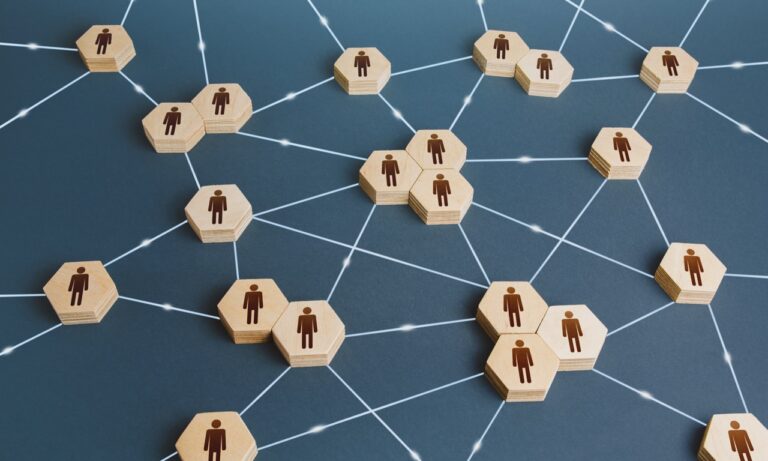Media and Mental Health: The Cost of Engagement
 Author:
Patrick Nagle
Author:
Patrick Nagle
 Editor:
Sue Collier
Editor:
Sue Collier

Media is no longer simply consumed; it has become the consumer. In a world saturated with digital content, it serves as a constant emotional backdrop, shaping how people feel, relate, and define themselves.
Its influence is inescapable, carried through notifications, algorithms, and curated feeds designed to exploit human vulnerability and reach into the deepest layers of emotion.
As the pace of consumption accelerates, so does its psychological toll. What feels like information overload is, at its core, a crisis of engagement. It quietly erodes emotional resilience, identity, and well-being.
Media Builds Emotional Worlds
Digital platforms are not passive tools. They construct emotional realities. Through targeted content, sound design, and constant notifications, media does more than reflect how people feel. It shapes those feelings. Personalized feeds learn patterns of attention and emotion. They resurface old memories or present new content designed to provoke a response. A single scroll can pull someone from nostalgia to outrage in seconds.
This emotional volatility is intentional. It is built into the structure. Likes and comments are not just features. They become feedback loops. Approval turns into a measure of worth. Engagement becomes a form of currency.
For many, this creates the illusion of connection. But what feels like belonging often becomes dependence. The cost is emotional strain. Gradually, people stop asking how they feel and begin asking how they are being perceived.
⭐ Awareness Tip: Set screen-free times every day. The mind needs space to recover from the emotional treadmill.
Media as Stimulus and Biofeedback
Media does not wait for conscious choice. It acts directly on the nervous system. Each ping, buzz, or visual cue triggers a biological response. Dopamine rises with the anticipation of reward. Cortisol spikes during interruptions or stress. With repetition, these reactions become habits. The body responds before the mind even notices.
This is not a side effect. It is the goal. Platforms are designed to watch, learn, and adapt. If a user lingers on a post, the algorithm remembers. If heart rate increases during certain content, wearables take note. These signals form a loop. The platform feeds stimuli, the body responds, and the system refines its strategy.
The result is less autonomy. Attention is no longer a choice. It becomes a reaction. In this environment, it is easy to forget what calm feels like. Media becomes the background hum that trains the nervous system to remain alert, scattered, and reactive.
⭐ Awareness Tip: Step outside the loop. Replace one screen-heavy moment each day with silence or nature. The mind needs space to reset.
Emotional Memory and Algorithmic Design
Every action online becomes data. Clicks, pauses, and scroll patterns are recorded and fed back into systems built to shape future behavior. What a person sees tomorrow depends on how they reacted today. This is not memory in the traditional sense. It is algorithmic recall, tuned to provoke emotion.
Platforms resurface memories to draw people back into emotional states. A photo from years ago appears without warning. A playlist recalls a specific mood. Even ads echo recent searches or anxieties. These cues are not accidental. They are calculated to feel intimate and timely, though they serve the purpose of retention, not reflection.
Over time, users begin to confuse repetition with relevance. What resurfaces starts to feel important simply because it returns often. Memory becomes a tool for manipulation. The past is not remembered. It is served back in pieces, curated to keep people watching, reacting, and staying inside the loop.
Engagement Tactics Designed to Trigger Emotion
- Artificial Memories: Platforms resurface old posts to reignite emotions. A photo from a past relationship or vacation can spark nostalgia or sadness, quietly shaping present mood.
- Curated Health Content: Reminders about fitness goals, diets, or body image bring back past struggles. For many, these triggers fuel anxiety and self-consciousness.
- Targeted Life Events: Platforms surface milestones or financial themes at strategic moments. Content about budgeting, savings, or personal achievements can spark stress, especially for those facing instability.
⭐ Awareness Tip: Media platforms do more than track. They shape emotions, predict reactions, and reinforce habits to keep people hooked. Spotting these patterns is the first step to taking back control.
Fear as an Engagement Strategy
Fear captures attention more quickly than reason. Media systems know this and use it. Headlines are written to trigger anxiety. Stories are selected not just to inform but to provoke. Fear activates the body, sharpens focus, and holds people in place. This is why content that stirs panic or outrage spreads faster than facts.
During crises, fear-based content dominates. Political ads, crime coverage, and health emergencies are often exaggerated or framed in extremes. What starts as information becomes a cycle of dread. The more people react, the more fear is fed into the system. Algorithms reward this response because fear keeps eyes on the screen.
This cycle rewires perception. The world begins to feel more dangerous than it is. Risk is distorted. Threats are magnified. Eventually, people do not just feel afraid. They become conditioned to seek fear, mistaking stimulation for relevance. Fear becomes the fuel of attention. And attention becomes manufactured, and monetized.
⭐ Awareness Tip: Be intentional about what is consumed. Choose reliable, independent sources and resist fear-driven content. Staying grounded is an act of resistance.
The Illusion of Connection
Social media platforms offer connection but often deliver its opposite. What appears as community is frequently comparison. What feels like interaction is often performance. People curate their lives, post their highlights, and watch others do the same. The result is not closeness. It is quiet self-judgment.
Research shows that the more time people spend on social platforms, the more isolated they often feel. Likes provide fleeting validation. Comments may offer momentary attention. But underneath these interactions, emotional distance grows. The pressure to stay visible, relevant, or interesting begins to erode self-esteem.
This is not accidental. Platforms rely on insecurity to drive engagement. The more someone questions their worth, the more they return to the feed for reassurance. But reassurance rarely comes. Instead, the cycle continues. People scroll to feel connected, yet they log off feeling more alone than before.
⭐ Awareness Tip: Limit screen time. Reset offline with activities like walking, exercising, or face-to-face conversations that restore perspective.
Identity in the Digital Mirror
Online, identity is measured in metrics. A post is not just an expression. It becomes a test of value. Likes, views, and shares turn self-image into something visible, something counted. As such, this shifts how people see themselves. They begin to look outward to understand who they are.
Curated images and filtered moments start to define reality. What gains approval is repeated. What draws criticism is hidden or deleted. This creates a vicious cycle of self-editing that slowly weakens authenticity. Identity bends toward what performs well, not what feels true.
As dependence on external feedback grows, internal clarity fades. People become less sure of their own voice, their own values. When attention becomes a stand-in for self-worth, even silence can feel like rejection. In this environment, authenticity feels risky. But without it, identity becomes inauthentic—shaped by the algorithm rather than the person.
⭐ Awareness Tip: Protect identity. Limit comparisons. Set boundaries. Share only what aligns with genuine values.
Wearables and Emotional Surveillance
Smart devices are no longer limited to tracking steps or sleep. They now monitor emotion in real time. Heart rate, breathing, and movement patterns are captured and matched with the content people consume. Excitement becomes data. So does stress. Every physiological response is recorded and analyzed.
These insights are not kept private. They are used to shape what users see next. If heart rate spikes during a video, the algorithm learns. If calm returns with a certain soundtrack, that too is logged. Platforms begin to respond to the body as much as to behavior.
This kind of feedback loop makes it harder to unplug. The body’s signals become inputs for what comes next. Calm becomes a product. Stimulation becomes a strategy. Ultimately, awareness shifts. Instead of tuning into internal cues, people rely on devices to tell them how they feel. The body is no longer a guide. It is a sensor, feeding data into a system designed to keep attention in motion.
Wearable Devices
- Smartwatches: Track heart rate, sleep, and stress patterns. They detect subtle shifts during content engagement. The downside is constant monitoring, which can heighten anxiety and turn normal variations into perceived problems.
- Fitness Trackers: Record HRV, activity, and rest. While they provide insights, they also promote compulsive self-tracking, where missing a daily goal feels like failure.
- Sleep Trackers: Measure REM cycles, heart rate, and rest quality. They can reveal how late-night content consumption affects sleep, but obsession with the data can trigger sleep anxiety, where the pursuit of “perfect rest” makes rest harder to achieve.
⭐ Awareness Tip: Take power back. Consider discarding wearable devices altogether. Do not let wearables own awareness. Tune into the body’s natural signals.
Reclaiming Awareness
Media does not ask for permission. It enters the mind through habit, repetition, and design. It is not neutral. It is built to shape. The consequences are not only digital. They are emotional, cognitive, relational. What seems like passive engagement is often deep conditioning.
Awareness begins by recognizing this influence. It creates space between reaction and choice. Once the behavioral patterns are seen, they can be questioned. Once the strings are visible, they can be cut. This does not require abandoning technology. It requires using it with care and purpose.
Small shifts support resilience. Setting screen-free hours protects emotional energy. Choosing reliable sources reduces anxiety. Moving attention offline into nature, conversation, or silence helps restore balance. These practices are not retreats. They are repairs. They remind the nervous system what steadiness feels like.
Awareness empowers by interrupting the cycle of reaction and restoring the ability to reflect, choose, and feel without being guided by a feed. In this space, identity becomes clearer. Emotion becomes more stable. The mind begins to belong to itself again.
MentalHealth.com is a health technology company guiding people towards self-understanding and connection. The platform provides reliable resources, accessible services, and nurturing communities. Its purpose is to educate, support, and empower people in their pursuit of well-being.
Patrick Nagle is an accomplished tech entrepreneur and venture investor. Drawing on his professional expertise and personal experience, he is dedicated to advancing MentalHealth.com.
Latest

Categories
- Opinion (137)

